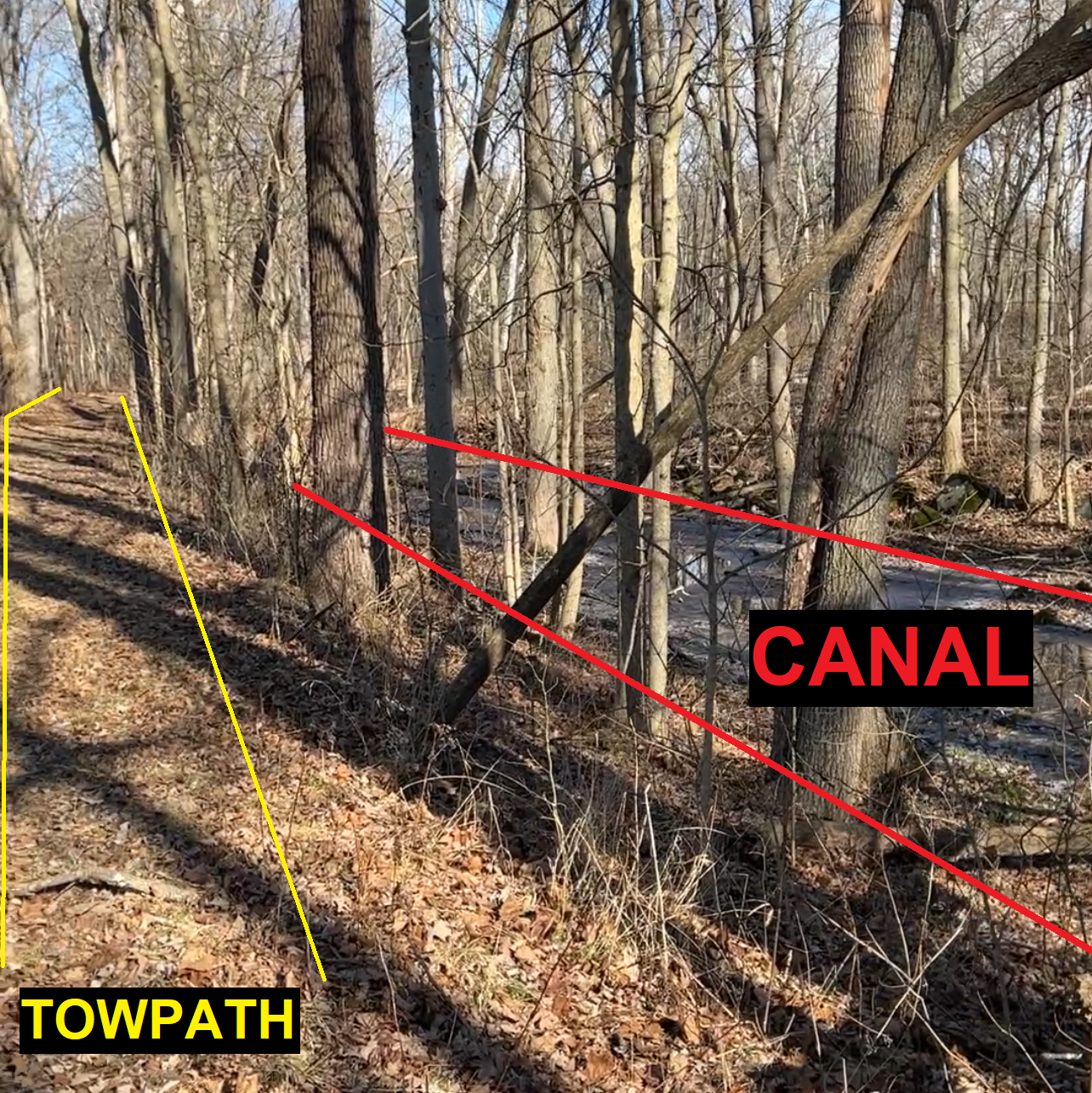In the 1800’s, Indiana constructed the second-longest canal ever built in human history. The Wabash & Erie Canal, when completed in 1853, stretched 468 miles from Lake Erie at Toledo, Ohio all the way to the Ohio River at Evansville. This ambitious project, at one time the longest man-made structure in the western hemisphere, boggles the mind in its scope and complexity.

If this 19th century superhighway helped transform Indiana from an impassable frontier to a bustling land of opportunity, surely there must be lots of places along its former route to see remnants today, right? Well, not exactly.
The most recent inquiry on this topic came from Lynn Salvo, who recently set the world record for being the oldest person to cross the United States via bicycle. You can read more about her journey on her blog. She asked us if she had crossed the canal during her trip through Indiana, and she discovered her route included four “canal crossings”!

An Elusive Treasure
Compared to better-preserved American canals, like the Erie Canal in New York, it’s quite difficult to find Wabash & Erie Canal remnants today. This is because the Wabash & Erie Canal was composed primarily of wood structures rather than more durable stone. Timber was easier to find and cheaper during canal construction, but those structures haven’t survived the last 150 years since the canal’s closure.
The next obstacle is ownership of the canal. Starting in the late 1840’s, Indiana was forced to transfer canal ownership to private bondholders due to financial constraints. The full explanation of why Indiana had to hand off the canal is a long story for another day!
When the canal closed in the 1870’s, the route was auctioned to new private owners, so there was no concerted effort to preserve this piece of the past. The individuals who purchased large chunks of the canal route proceeded to sell off parcels to numerous entities, so things became quite fragmented!
What did the canal channel turn into? That depends on who purchased the canal sections. Various portions became roads, railroads, farmland, or other private property.
Unfortunately, none of the buyers purchased canal land for the purpose of historic preservation, so this heritage has largely been lost. The State of Indiana had no interest in preserving the historic nature of the canal for financial reasons, and as the years passed the feasibility of such preservation became fainter.
Reclaiming History
The first focused effort to preserve and restore a canal section came in the early 1970’s with the founders of Carroll County Wabash & Erie Canal, Inc. The section of canal in Delphi is the last remaining navigable, publicly accessible portion of the Wabash & Erie Canal in Indiana.
But what if you live elsewhere along the canal route? You’re in luck because our friends at the Canal Society of Indiana have produced an incredible map where you can trace the canal over a present-day interactive map! Take a moment (or hours!) to look through the map and make your own discoveries.
If you are looking for hints of canal throughout Indiana, you may be lucky to find subtle traces of structures, such as submerged timbers or even a few stone structures. But with much of the old route located on private property, your options are limited.
There are some places where you can see old canal channel, even though it might not look like much at first glance! Below is a photograph from Shawnee Bottoms, one of the beautiful properties that our friends at NICHES preserve and offer for public enjoyment. You can see parts of the canal still contains some amount of water, depending on the season. Plus, the towpath is visibly elevated (where canal laborers would pile all the earth they were excavating), which once protected the canal from flooding.

You can find imprints like this at sites along the canal’s route as far south as the Evansville area! While it is likely overgrown and no longer as grand as it once was, searching for canal remnants is a delightful outdoor pursuit that can help you get in touch with our natural surroundings and our history.
If you venture to the Ohio portion of the canal route, you will have the pleasure of experiencing a preserved portion of canal at Toledo Metroparks! Near the former Lake Erie canal terminus, you can ride a mule-towed canal boat through a functioning lock, which is a rare experience indeed.
Why Bother?
You may ask yourself why it matters to preserve a long-gone story. The answer is that preservation uniquely tells us where we have been so we can make informed decisions about where we want to go! We still wrestle with infrastructure all the time: who should pay for it? Who will benefit and who will be harmed from it? Why should we invest in it? Our state’s canal history, which is connected with our nation’s history, is a crucial part of our heritage, including the triumphs, the tragedies, and sometimes even the comedies.
If you would like to join the cause of preserving Indiana’s fascinating canal story, please consider supporting Wabash & Erie Canal Park! Our mission is threefold: preservation, education, and recreation. We preserve the past to share with learners of all ages, and we provide engaging and fun ways to connect with Indiana’s canal story.
Happy searching as you discover Indiana’s hidden superhighway for yourself!









Nicely written. Note that the interactive map does not open in a separate window (or tab on my Chromebook). Instead, it replaces the window of the blog itself.
Thank you for the suggestion! The link has been updated to open a new tab.